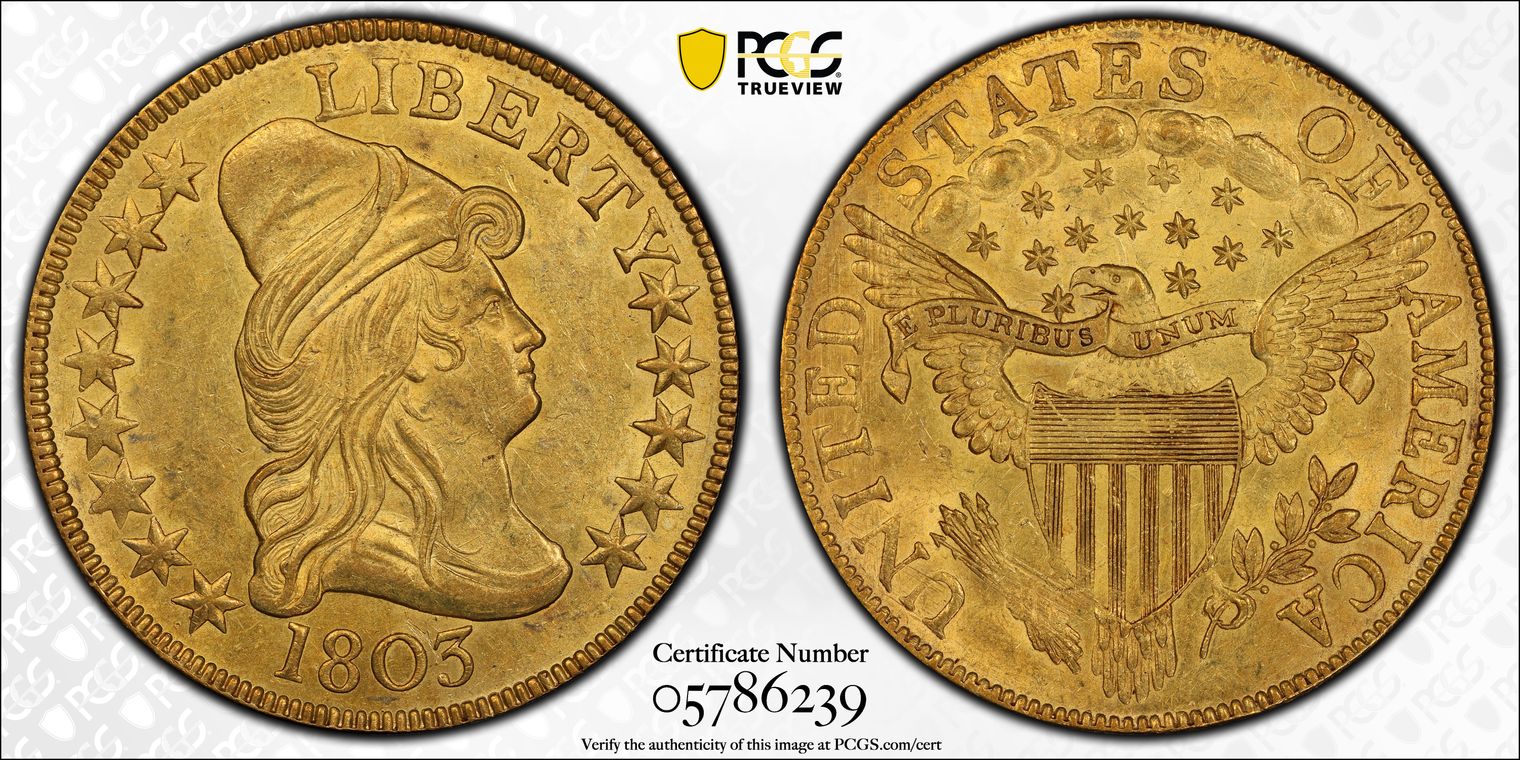1803 $10 Small Reverse Stars AU58+ 认证号05786239, PCGS号8565
拥有者评论
专家评论
Ron Guth
1803 Eagles ($10) are found with either large or small stars on the reverse. In the years following David Akers' writeup in 1980, sufficient interest has developed in the two varieties that they are now recognized by PCGS and NGC, and the respective population reports give us a good estimate as to their relative rarity. Akers called the Large Stars reverse "decidedly more rare" and he was correct -- the Large Stars (according to the PCGS Population Report) is four times as rare as the Small Stars variety. However, both can be found in Mint State with relative ease, though such high-grade pieces are rather expensive.
The PCGS CoinFacts Condition Census for the Small Stars variety starts at MS64 and ends at MS65. This is an amazingly high level for any early U.S. coin, especially for a large-size gold coin. This indicates that many were saved by collectors, to whom we give thanks for their prescient thinking.
Full struck examples of this variety are non-existent. All come with weak stars, especially on the lower left; the rare example will have strong details on the arrows and the eagle's claw which holds them.
The finest 1803 Small Reverse Stars $10's are a single PCGS MS65 (which has been off the market since 2000) and a similar Gem in the National Numismatic Collection at the Smithsonian Institution.
David Akers
Eagles were minted in 1802 but all were struck using dies dated 1801. Therefore, the 1803 is the next issue of this type. As a date, the 1803 is perhaps twice as rare as the 1799 or 1801, and it is considerably more difficult to obtain in choice or gem uncirculated condition. Most available specimens are are quite high grade, EF-AU being typical. Varieties exist with small reverse stars as on earlier issues and large reverse stars as on the 1804. No difference in value is generally ascribed to these varieties but in my opinion, the large reverse stars variety is decidedly more rare, and should be worth a premium. There is also one interesting variety, discovered by Harry Bass, that has an additional 14th star in the reverse clouds.稀有性和存量估计 了解更多
| 所有评级 | 250 |
| 60或以上 | 125 |
| 65或以上 | 3 |
| 所有评级 | R-6.6 |
| 60或以上 | R-7.7 |
| 65或以上 | R-9.8 |
| 所有评级 | 5 / 10 TIE |
| 60或以上 | 8 / 10 |
| 65或以上 | 4 / 10 |
| 所有评级 | 8 / 14 TIE |
| 60或以上 | 12 / 14 |
| 65或以上 | 4 / 14 TIE |





















